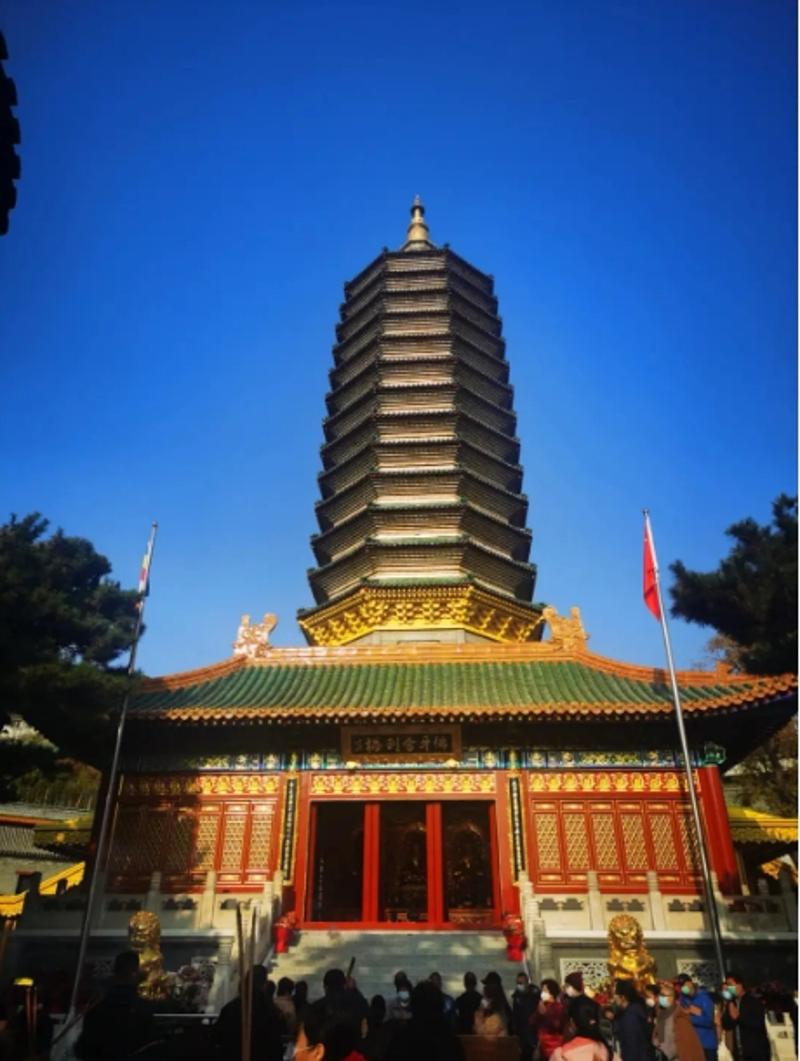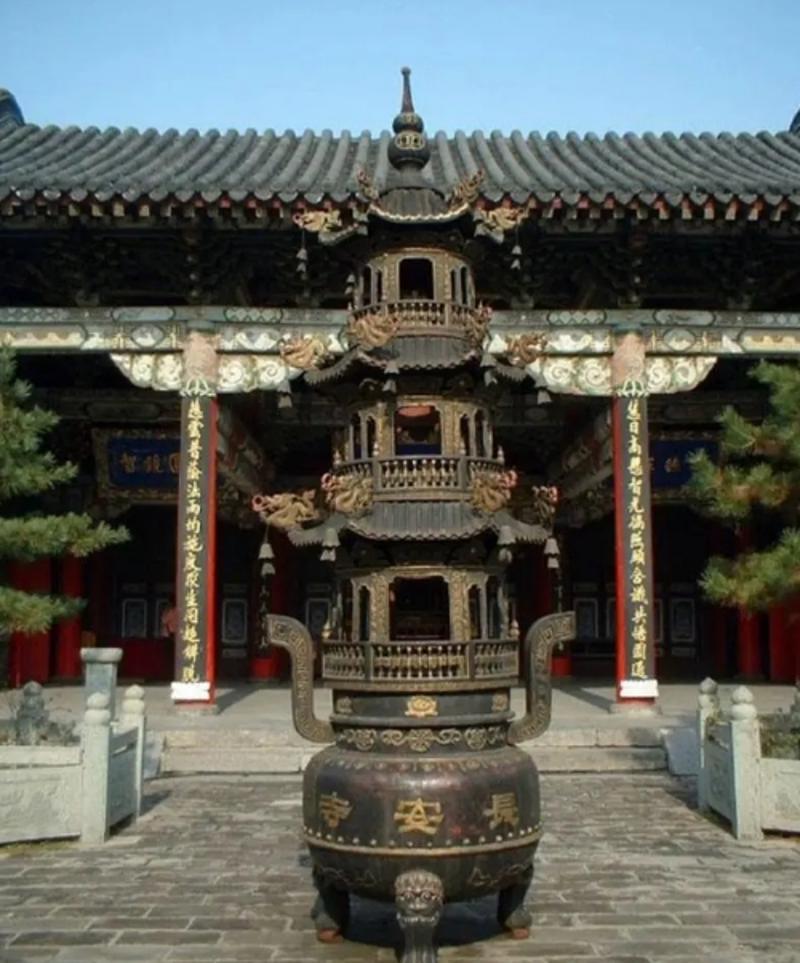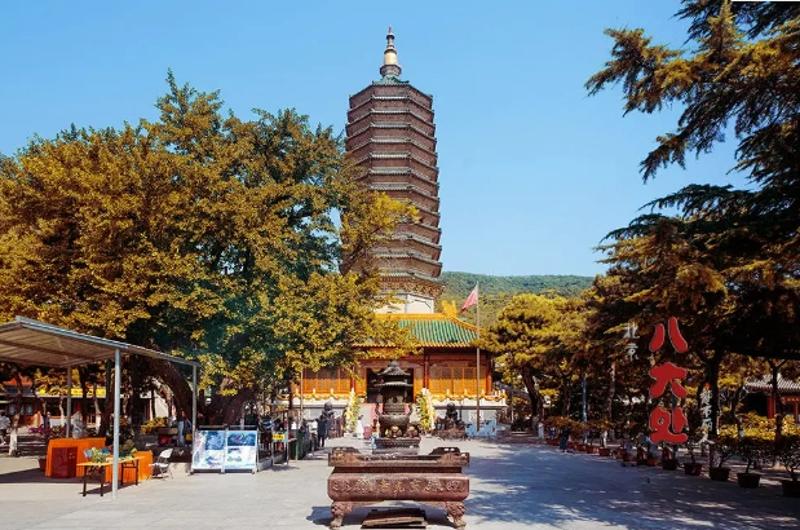Exploring Beijing's Badachu Park: Where History Meets Nature
1、Introduction to Badachu Park
1.1. Location and Historical Background of the Park
Badachu Park is located in the northwest outskirts of Beijing, in the Shijingshan District, adjacent to Xishan and Fragrant Hills. Its history can be traced back to the Tang Dynasty when it was already a Buddhist sacred place. After centuries of development, it has become a well-known tourist destination that integrates natural landscapes and cultural heritage.

1.2. Cultural Heritage of the Park
Badachu Park is renowned for its long history and rich cultural connotations. It is home not only to eight Buddhist temples, Hai Bao Valley, and Mo Ya Valley but also to twelve natural landscapes, each carrying profound historical and cultural significance.
2、Introduction to Temples and Scenic Spots in Badachu
2.1. Eight Buddhist Temples
- 2.1.1. Overview of the Eight Temples
Badachu Park is dotted with eight Buddhist temples, including Chang'an Temple, Lingguang Temple, Sanshan nunnery, Dabeis temple, Longquan nunnery, Xiangjie Temple, Baozhu Temple, and Zhengguo Temple. These temples are not only important places of Buddhist worship but also masterpieces of ancient architecture.
- 2.1.2. Introduction and Features of Each Temple
- Chang'an Temple: Once a famous temple with five hundred Arhats statues, now not open to the public.

-
- Lingguang Temple: Built in the Tang Dynasty, it houses the relics of Sakyamuni Buddha, making it a sacred temple for Buddhists.

- Sanshan nunnery: Known for China's largest inkstone, with lifelike stone carvings of dragons and longevity turtles.
- Dabeis temple: Famous for the vivid eighteen Arhats in the Great Hall, made of fine sandalwood powder.
- Longquan nunnery: Known for its clear spring, it is a secluded place for meditation.
- Xiangjie Temple: One of the largest temples, it was once an imperial palace during the Qing Dynasty.
- Baozhu Temple: Behind the Guanyin Hall, there is a cave with pebbles on the walls shining like pearls.
- Zhengguo Temple: The oldest temple in Badachu Park, with a history of more than 1200 years.
2.2. Hai Bao Valley and Mo Ya Valley
- 2.2.1. Highlights of Hai Bao Valley
Hai Bao Valley is a natural wonder in Badachu Park, renowned for its majestic mountains and clear streams. Visitors can admire the natural beauty here and experience the craftsmanship of nature.
- 2.2.2. Stone Carvings in Mo Ya Valley
Mo Ya Valley is a historical site in Badachu Park, preserving a large number of ancient stone carvings, showcasing the unique charm of ancient Chinese art. These stone carvings not only have high artistic value but also carry rich historical and cultural information.
2.3. Twelve Natural Landscapes
- 2.3.1. Description of the Twelve Scenic Spots
Badachu Park has twelve natural landscapes, including panoramic views from the mountaintop, springtime apricot blossoms, misty mornings between mountains, sunsets over Lushi Mountain, cuckoos singing in spring, swift streams after summer rains, tranquil valley streams, morning light filtering through the trees, moonlit bridges, fiery autumn leaves, lush greenery in summer, and snowy winter landscapes. Each spot has its unique charm, allowing visitors to experience the wonders of nature in different seasons.
3、How to Get to Badachu Park
3.1. By Bus
- 3.1.1. Introduction to Special Bus Routes and Stops
Near Badachu Park, there are several special bus routes, such as Bus No. 215, No. 347, No. 489, No. 958, and No. 972. Visitors can choose the appropriate bus route according to their departure point.
- 3.1.2. Introduction to Regular Bus Routes and Stops
In addition to special bus routes, there are also many regular bus routes near Badachu Park, such as Bus No. 1 from Gulou, and Subway Line 1, making it convenient for visitors to travel to the park.
3.2. By Subway and Bus
- 3.2.1. Introduction to Subway Transfer Bus Routes
Visitors can take the subway to the subway stations near Badachu Park, and then transfer to a bus to reach the park. For example, you can take Subway Line 1 to Baobao Mountain Station and then transfer to Bus No. 215 to Badachu Park.
- 3.2.2. Introduction to Subway Stations and Bus Stops
Subway stations near Badachu Park include Baobao Mountain Station and Bajiao Amusement Park Station, with bus stops located near the subway stations, making it convenient for visitors to transfer.
4、Fees and Opening Hours of Badachu Park
4.1. Admission Fees and Height Standards
- 4.1.1. Ticket Prices and Discount Policies
The admission fee for Badachu Park is 10 yuan per person for adults, 10 yuan per person for students (with a valid student ID), and free for children under 1.2 meters tall. Seniors and disabled people are admitted free of charge with valid identification.
- 4.1.2. Standards for Children's Admission
Children under 1.2 meters tall can enter for free, while those over 1.2 meters tall need to purchase tickets for admission.
4.2. Cable Car and Slide Fees
- 4.2.1. Cable Car Ticket Prices and Service Information
Badachu Park offers cable car services with a ticket price of 68 yuan per person, allowing visitors to overlook the park's beautiful scenery.
- 4.2.2. Slide Ticket Prices and Service Information
The park also features a slide, with a ticket price of 98 yuan per person, allowing visitors to experience the excitement and fun of sliding.
4.3. Opening Hours
- 4.3.1. Opening Hours in Different Seasons
Badachu Park is open to the public all year round. In summer, it opens from 6:00 to 19:30 (with ticket sales stopping at 18:30), and in winter, it opens from 6:00 to 19:00 (with ticket sales stopping at 18:00).
5、Recommended Visiting Time
5.1. Recommended Visiting Time
- 5.1.1. Recommended Time for Visiting in Different Seasons
Spring is the season of flowers in Badachu Park, where visitors can enjoy apricot blossoms, cherry blossoms, and more. Summer offers cool relief from the heat. Autumn is ideal for viewing red leaves, while winter offers snowy landscapes to admire.
6、Nearby Attractions
6.1. Introduction to Nearby Attractions
- 6.1.1. Xishan National Forest Park
Xishan National Forest Park is a famous natural scenic area in Beijing, known for its magnificent natural landscapes and rich biological resources.
- 6.1.2. Fragrant Hills Park
Fragrant Hills Park is a renowned park in Beijing, famous for its beautiful natural scenery and long history.
- 6.1.3. Qingyun Temple
Qingyun Temple is an ancient Buddhist temple with a long history and rich cultural heritage.
- 6.1.4. Beijing Botanical Garden
Beijing Botanical Garden is a park mainly dedicated to plant exhibitions and science education, featuring abundant plant resources and unique garden landscapes.
Q&A: Exploring Badachu Park in Beijing
- 1. What are the main attractions in Badachu Park?
Badachu Park boasts a variety of attractions, including eight Buddhist temples, Hai Bao Valley, Mo Ya Valley, and twelve natural landscapes. Each temple has its unique features, and the natural landscapes offer stunning views of mountains, streams, and seasonal foliage.
- 2. How can visitors get to Badachu Park?
Visitors can reach Badachu Park by public transportation, including special bus routes (such as Bus No. 215, No. 347) and regular bus routes (like Bus No. 1 from Gulou) that stop near the park. Additionally, subway lines (like Line 1) connect to stations close to the park, from where visitors can transfer to buses.
- 3. What are the admission fees and opening hours of Badachu Park?
The admission fee for Badachu Park is 10 yuan for adults, with discounts for students and free entry for children under 1.2 meters tall. Seniors and disabled individuals also enjoy free admission. The park is open year-round, with longer hours in the summer (6:00 to 19:30) and slightly shorter hours in the winter (6:00 to 19:00).